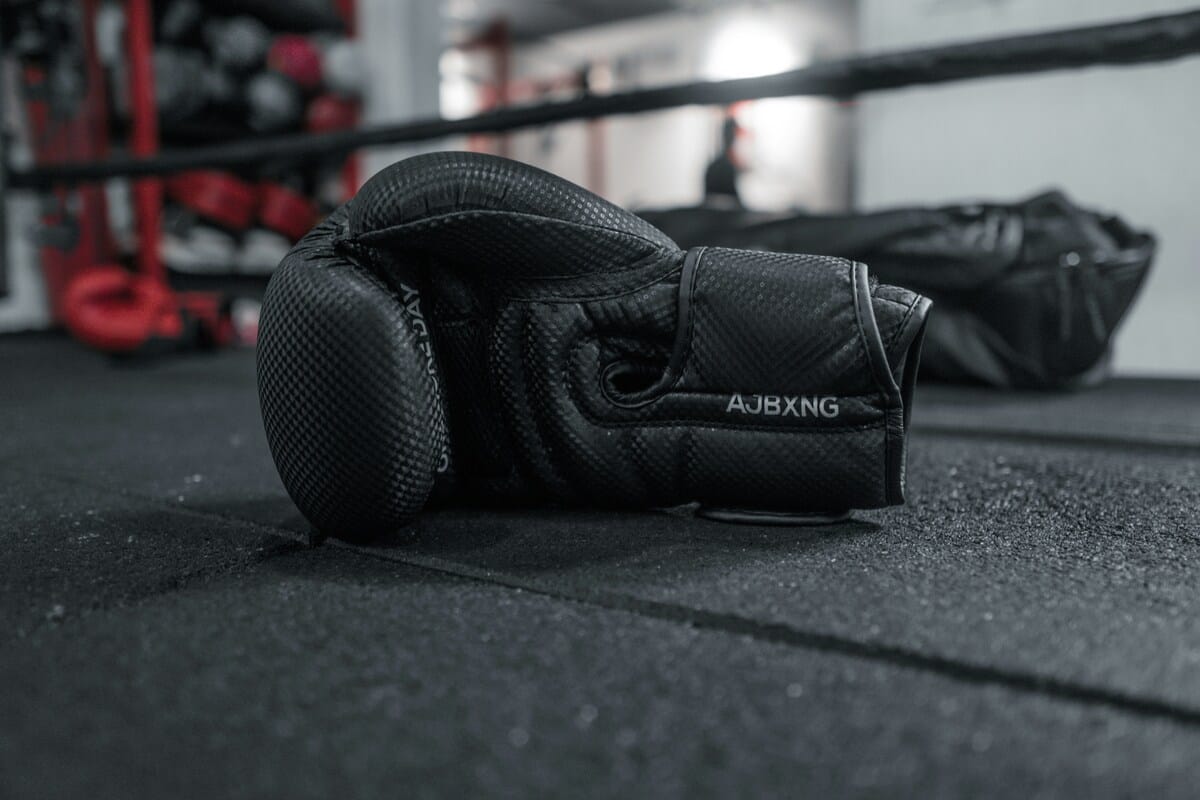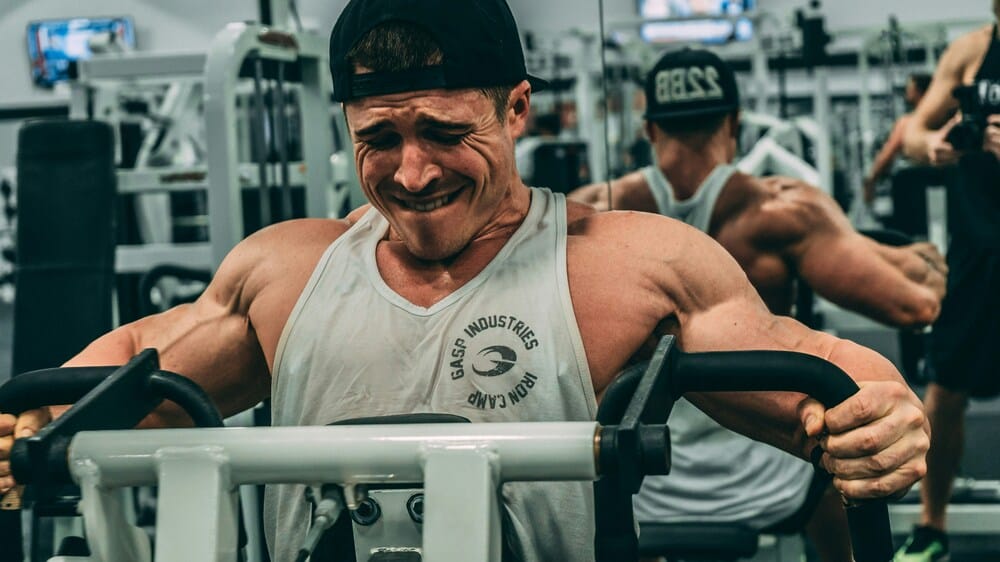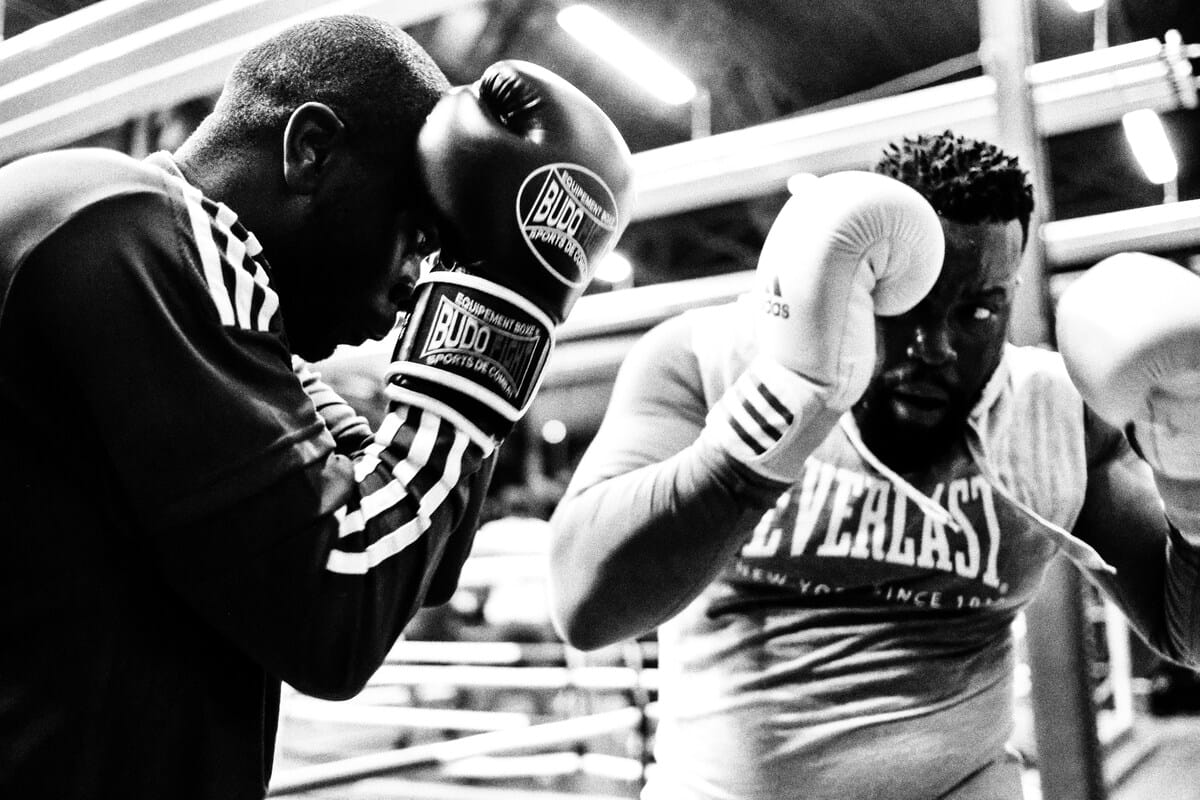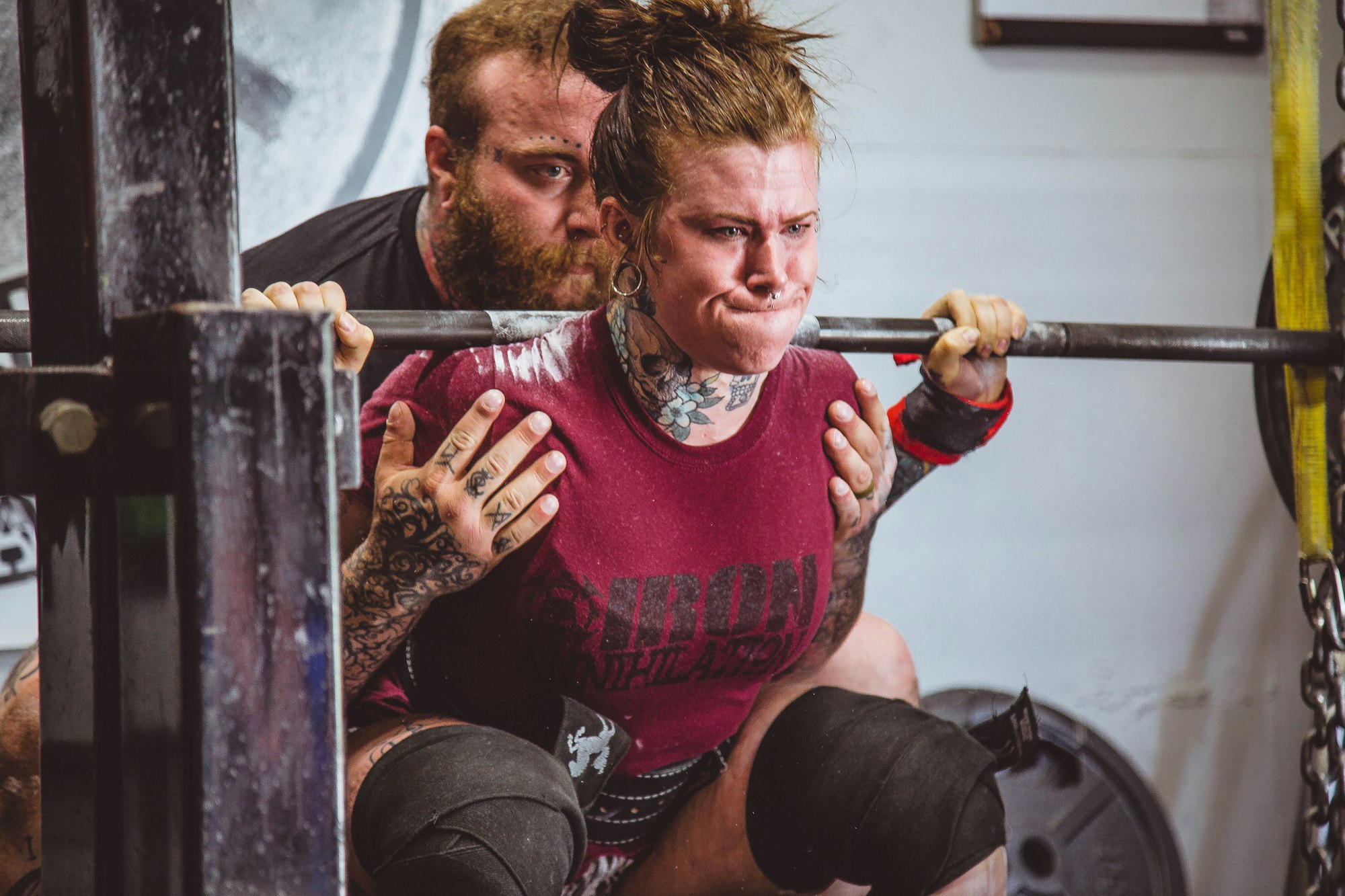Does boxing build muscle?


Can you gain muscle by boxing? 🥊
No, you can’t build a significant amount of muscle by boxing, or by punching the heavy bag.
That said, people who’ve been largely inactive might see some muscle growth when they start doing more exercise. (Even static stretching can cause some muscle growth.[1])
But due to how muscle hypertrophy actually works, building a lot of muscle mass through boxing alone is a physical impossibility.
Mechanical tension: How muscle growth actually works
For a muscle fibre to grow, it must experience mechanical tension.
The easiest way to understand mechanical tension is by experiencing it.
You experience mechanical tension when you’re moving a weight at a slow speed (speed), but with a high amount of effort (force).
This is because mechanical tension exists on what’s known as the "force-velocity curve".
If you drop and do as many push-ups as you can, you’ll notice how difficult the last five or so reps are. During those last few reps, effort is high, but the speed your muscles contract at is slow.
During these involuntarily slower reps, muscle fibres are experiencing high mechanical tension.

How to achieve mechanical tension
There are only two practical ways to make a muscle fibre experience enough mechanical tension to grow:
- Lift moderate loads until you reach muscular failure.
👉 Your rep speed will slow down considerably during the last five reps or so in the set, and the force you need to exert to move the weight increases.
- Lift heavy loads for sets of around five reps to, or just shy of, muscular failure.
👉 It’ll be impossible to move the weight quickly, and you’ll have to exert a lot of force to move the weight right from the start.
If you want to build the most muscle possible, the second method is more effective.
This is because fatigue piles up more than you’d think. Even during moderate-rep sets.
Types of movements that don’t cause mechanical tension
The Type II muscle fibres have the greatest potential for growth.
These muscle fibres are controlled by the highest-threshold motor units. In other words, they’re the hardest to activate. Your body avoids using them unless it really has to.
To turn them on, you have to wilfully exert a lot of force.
- High effort + light load = high speed
If you exert a lot of force with a light load, you’ll move it extremely quickly. You’ll end up with an explosive movement like a jump, or a throw.
The issue here? The movement speed is too high for those muscle fibres to experience enough mechanical tension.
- Low speed + light load = low effort
On the other end of the spectrum, you have an intentionally slow movement with a light weight. The issue now is that you’re not exerting much force. This means it’s only the lowest threshold motor units that are active, and these control the muscle fibres with the least growth potential.
What actually works
You want an involuntary slowing of the contraction.
Remember: High force, slow speed.
Which brings us on to…
Why you’ll never build muscle boxing
You will never build muscle mass by boxing.
Boxers may generate a high degree of motor unit recruitment when punching quickly, but their muscle fibres will never experience sufficient mechanical tension to grow beyond a low baseline.
That’s because boxers punch with just the weight of their hands. No matter how many times they throw a punch, there's simply not enough resistance. Their movement speed will never slow down sufficiently for muscle fibres to experience enough mechanical tension to grow.
At least, not without also generating huge amounts of fatigue (which interferes with the whole process.)

5 Benefits of boxing
You might not build much muscle boxing, but that doesn't mean it's poor exercise.
Boxing has a ton of benefits for your health, athleticism, and confidence.
Here are five of them...
1) It’s a fun way of keeping active 😁
Boxing is fun.
It’s a physical, contact sport that involves skill.
Focusing on the skill, leaning into the competitive nature of the sport, and trying to get better over time gives you direction. It gives you a marker of progress that isn’t all about the weight on the scale, or how fast you can run 5k.
In fact, the exercise becomes secondary to the sport. Getting a sweat on and your heart rate up is a happy byproduct of pushing yourself to get better at something.
The goal of beginning to outbox your sparring partners will, for some, be far more motivating than hitting a treadmill because their doctor told them to.
For people who need structure to stay active, but don’t enjoy team sports, boxing and other combat sports are a great option. They’re social without requiring teamwork. You alone are responsible for your losses and your victories.
2) It’ll improve your cardiovascular health 🫀
Boxing is hard work.
It’s very active, and especially when sparring with a real partner, there are consequences for not being fast on your feet.
Most newbies will feel their heart pumping just seconds into a first round. And the more explosively you bob and weave, and use your footwork, the harder your heart and lungs will have to work to support that movement.
The end result?
Your heart and lungs get better at doing their job at rest, too, and your cardiovascular health improves.
3) You’ll build muscular endurance 🏃♂️➡️
Callisthenics (bodyweight training) has been a staple of supplementary boxing training for decades.
Remember those Rocky montages. He’s doing pushups, crunches, and lunges, and running through the snow.
While your muscles won’t grow from boxing alone like they will from working out in a gym, they’ll still adapt and improve their ability to do the job you’re giving them.
Add some callisthenics to the mix, and your body will really start to respond:
- Running will get easier.
- You’ll be able to train longer, and harder.
- You’ll be able to maintain greater presence of mind even late into your workouts.

4) You’ll increase your athleticism 🤸♂️
Boxing involves training your co-ordination, your foot speed, and your explosiveness.
If you feel clumsy moving through your everyday life, you’ll probably feel very uncomfortable the first time you step into a boxing gym.
But practice is the only way to improve.
Keep at it, and you’ll find the athleticism you build carries over into your everyday life.
You’ll be able to bound up flights of stairs while feeling light on your feet. Your whole body will feel more responsive.
5) It’s a viable outlet for aggression 😤
Boxing is something of a saviour sport.
For young people who might not have much direction, boxing is a viable outlet for angst.
Giving someone a place in a social hierarchy, the discipline to show up every day, and a target to hit can change someone’s life around.
If you’re a parent worried about your child’s behaviour, all combat sports (so long as they’re taught by the right people), instil a level of confidence and self-respect (as well as humility) that might fix their relationship with themselves, and solve the problems you’re having with them.
And for older folks with the stress of work, finances, and relationships, getting physical and active, whether it’s lifting weights to improve your physique, or hitting the heavy bag, will fill your body and brain with endorphins, lift your mood, and help melt away psychological stress.
Myth: Boxing builds “lean muscle”, which is different from “bulking up”
Some authors online claim that boxing workouts build “lean muscle”, and that this is different from “bulking up”.
This… isn’t true. ❌
There are only two ways you can change your body. You can build muscle, and you can lose fat.
There’s no way to build “lean muscle” instead of “bulky muscle”. After all, there’s no other way to describe any world-class, stage-ready natural bodybuilder than covered head-to-toe in “lean muscle”.
The boxer’s physique
The two most heavily populated weight divisions in boxing are welterweight and middleweight, with maximum eligible bodyweights of 147lbs and 160lbs respectively.
Given that the average height of a man in the U.S. and U.K. is 5’ 9”, these are light people.
Here’s an exercise for you: Search for some images of current welterweight and middleweight boxing champions.

They look pretty good, right? Maybe you’d even want to look like that?
Why champion boxers are poor physique role-models
Here’s the problem with comparing yourself to them:
They’re world-class competitive athletes.
It’s entirely reasonable that the pool of hyper-competitive, incredibly athletic, genetically gifted individuals who stand a chance at becoming boxing world champions in any weight division are, naturally, genetically blessed to carry around more muscle mass without training to specifically build it.

They’ve also probably been training hard, physically, since they were young. And it’s a near certainty that the body recognizes that kind of stimulus and makes some adjustments during adolescence to set itself up for a lifetime of that kind of activity.
Your average office worker these guys are not.
What about Mike Tyson?
You might even ask (and fair enough), what about Mike Tyson?
Mike Tyson weighed around 220lbs at 5’10”, training with just callisthenics (bodyweight exercises) and boxing workouts.

But the answer here is the same. There was nothing normal about Mike Tyson. At 20 years old and just 5’10” he started a 37-win streak in the heavyweight division, knocking out guys half a foot taller than him, with longer reach. He’s a household name for a reason.
There’s no reason to believe his muscularity and build were not the result of remarkable genetics, rather than some secret boxing muscle growth regimen.
One more point: These guys train all day long, all week long. So those images you’ve pulled up? They’re the best you’ll see.
A better physique role-model
Compare the guys above to your average gym-goer who has been training for three hours a week for a year or two. Maybe they’ve been tracking their protein intake, and they’ve been consciously making some better choices about what they eat.
Chances are, they’ll look at least as muscled as one of these guys who trains for a living.
They might not be as lean, because getting in shape for a boxing match entails dropping weight (i.e. losing fat and water weight to make the weight division cut-off.)
But, if they’ve been training properly, they’ll look pretty damn good. And with a much smaller weekly commitment than a professional boxer.
That's why we think the average person, who just wants to look and feel better, serves themself best by training for muscle growth just two to three hours a week.
References
- [1] Simpson, C L et al. “Stretch training induces unequal adaptation in muscle fascicles and thickness in medial and lateral gastrocnemii.” Scandinavian journal of medicine & science in sports vol. 27,12 (2017): 1597-1604. doi:10.1111/sms.12822
- [2] Schoenfeld, Brad J. “The mechanisms of muscle hypertrophy and their application to resistance training.” Journal of strength and conditioning research vol. 24,10 (2010): 2857-72. doi:10.1519/JSC.0b013e3181e840f3


